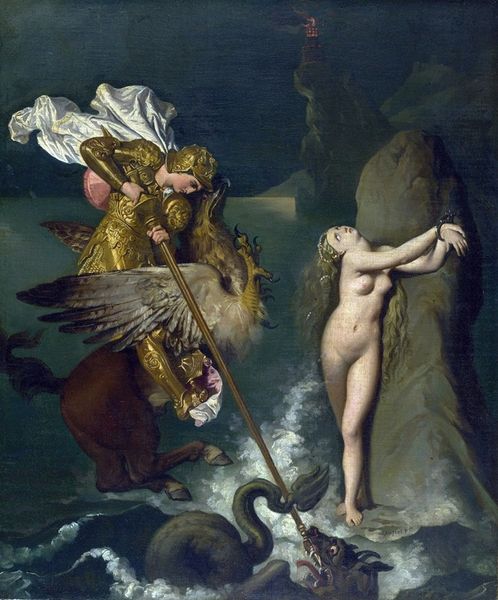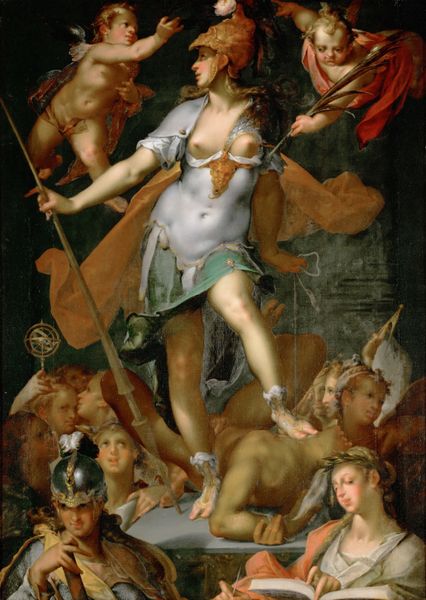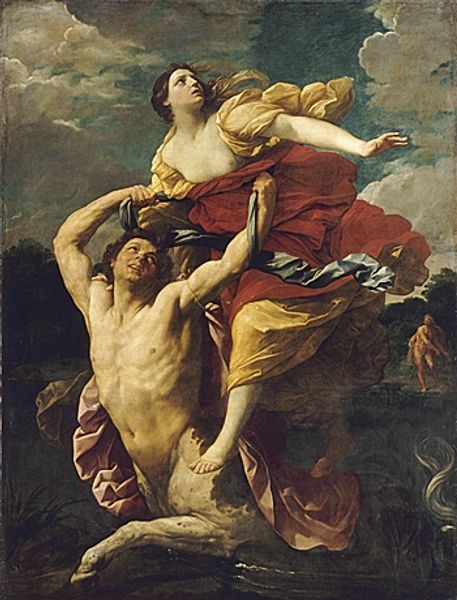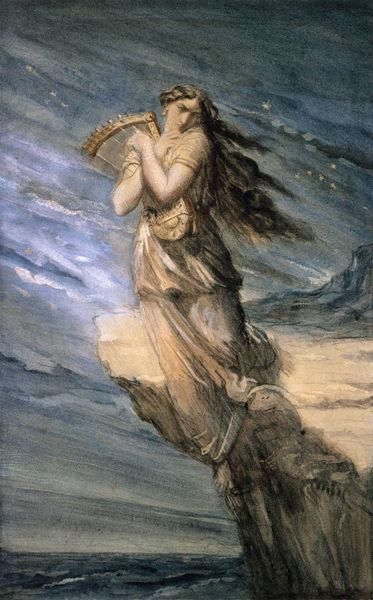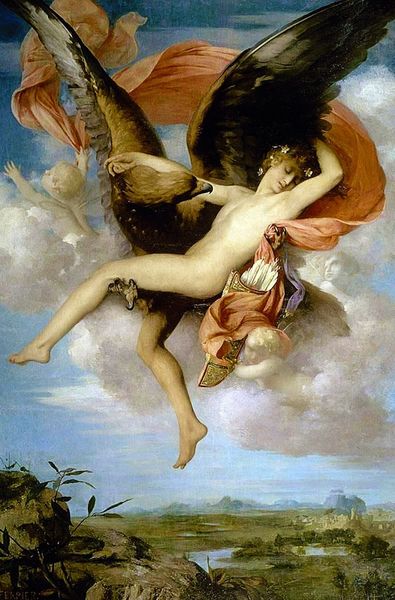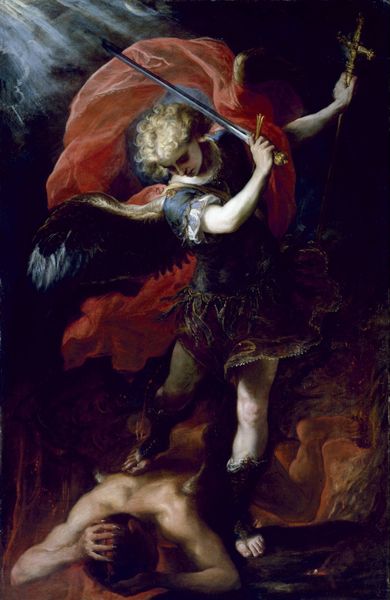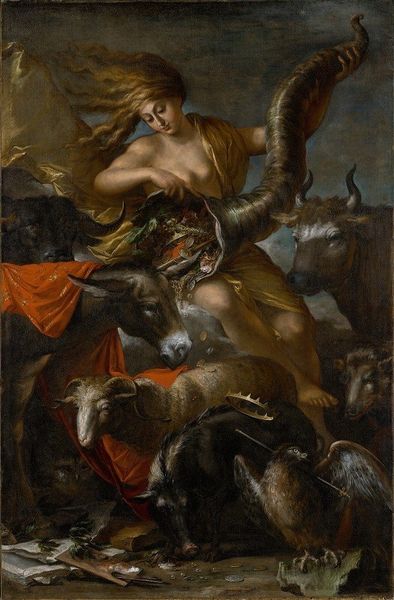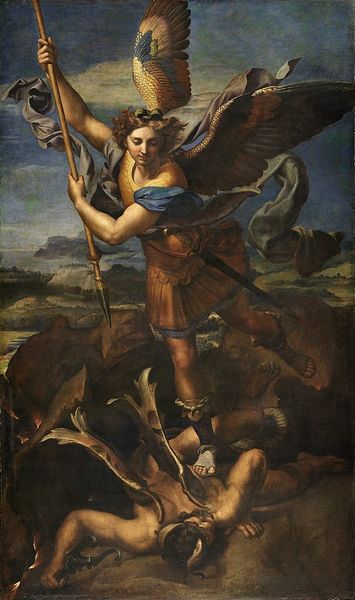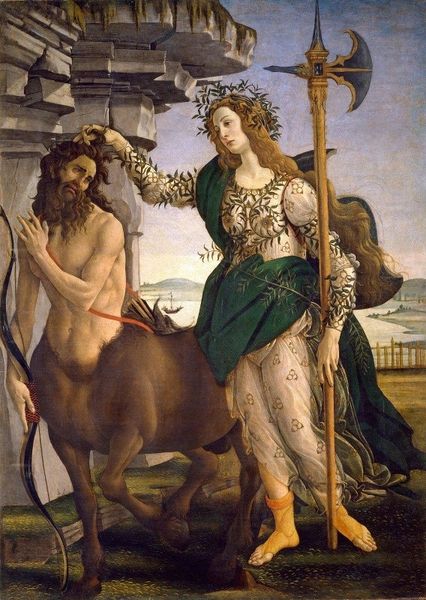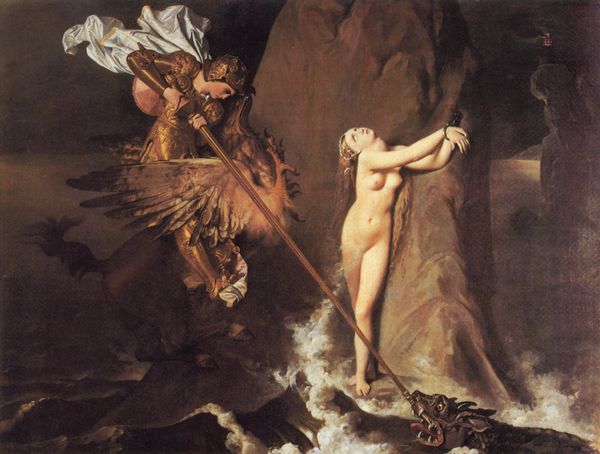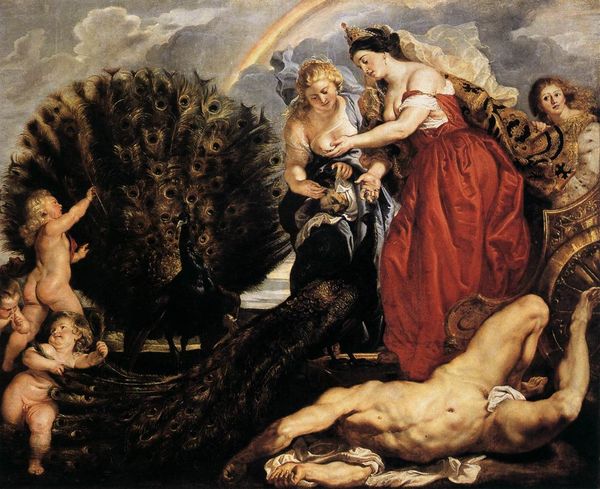
oil-paint
#
portrait
#
baroque
#
oil-paint
#
figuration
#
oil painting
#
history-painting
Copyright: Public domain
Editor: Here we have Orazio Gentileschi’s “Diana the Huntress,” from around 1630, rendered in oil paint. I'm immediately struck by the contrast between the dramatic, almost turbulent sky and the calm, statuesque figure of Diana. What do you see in the visual structure of this work? Curator: Primarily, the composition demonstrates a mastery of Baroque aesthetics. Observe the dynamic diagonals created by Diana's body and the bow, counterbalanced by the more stable vertical presence of the greyhound. Gentileschi exploits chiaroscuro to model form, bathing Diana in a soft, ethereal light which accentuates her smooth skin against the textural complexity of her dress. The fabric, how it folds and drapes, is almost a study in itself. Editor: It's interesting you point out the fabric. It almost looks as though Gentileschi dedicated more detail to it than the landscape itself. What would that suggest? Curator: That divergence might propose the formal tension central to the work. Note that there is a discordance in the texture, and thus emphasis between different material components in the image; perhaps signalling to the symbolic attributes of divinity with a human figure in a pastoral environment. Consider how the muted tonality of the ground provides a stage for Diana’s figure, rendering her otherworldly form in high relief. How do these formal components enhance the expressive quality of the painting? Editor: Thinking about what you said, the arrangement highlights the almost sculptural presence of Diana against the implied motion of nature. It presents an interesting contrast. I hadn't really picked up on that at first glance! Curator: Indeed! By understanding the way Gentileschi used light, line, and color, we see his conceptualisation of classical subject matter with contemporary concerns, therefore allowing for this complex visual experience to emerge.
Comments
No comments
Be the first to comment and join the conversation on the ultimate creative platform.
